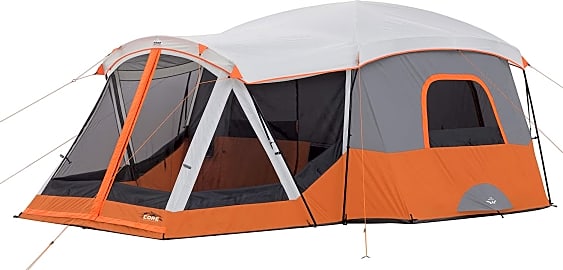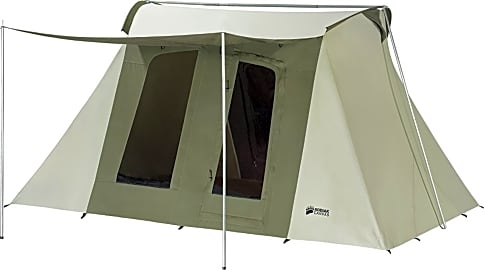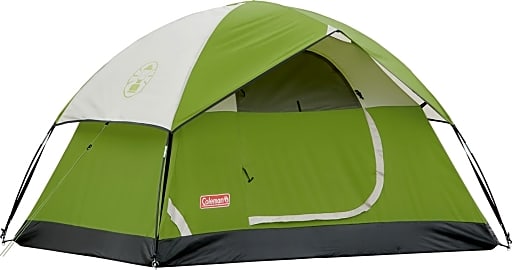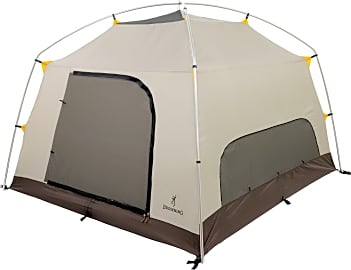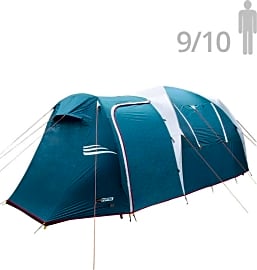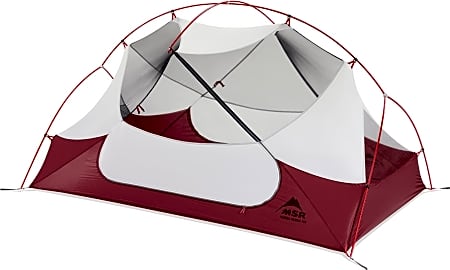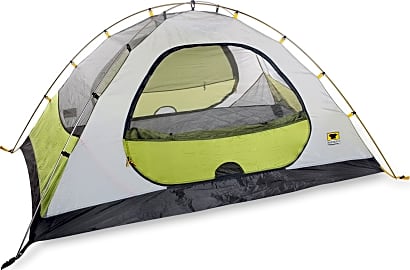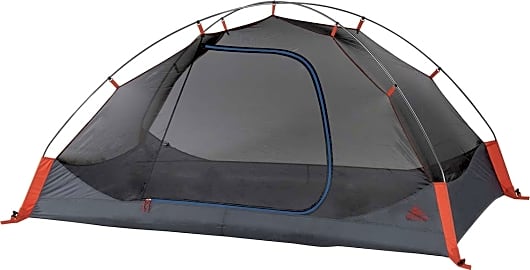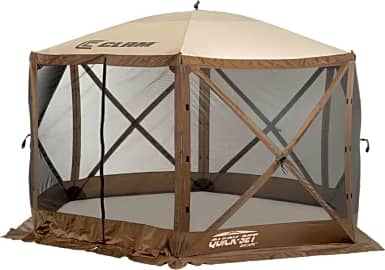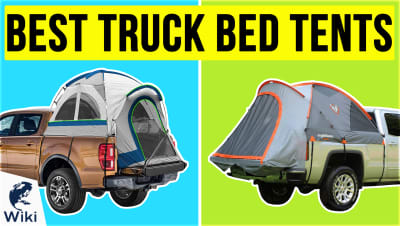The 10 Best Tents

This wiki has been updated 40 times since it was first published in May of 2015. No matter how much you may love nature and the great outdoors, when camping, most people want a place to sleep and relax in that is safe from the elements and protected from insects and other critters. We rounded up some of the sturdiest tents available, in a range of sizes and offering a variety of features, so individuals as well as groups can find something suitable here. When users buy our independently chosen editorial recommendations, we may earn commissions to help fund the Wiki.
Editor's Notes
September 02, 2020:
Whether you're traveling solo, with one companion, or with a whole group, we wanted there to be tents on our list to fit each of those scenarios. Reliable and durable construction was also important, as these might be used in all sorts of weather. We also looked for special features that would address some of the inconveniences of sleeping outdoors.
Wind-, water-, and UV-resistant, the Gazelle T4 Overland 22 earned a spot because it can keep you comfortable in most climates. Meanwhile, the Browning Camping Glacier 4-Person has sealed seams to keep you dry and a durable Oxford bottom that resists tears. Thanks to its stainless steel stakes and cotton duck canvas construction, the Kodiak Canvas Flex-Bow Deluxe should remain in good condition after plenty of use.
If you are traveling with a large group, the Core 11-Person Family Cabin can be useful, as it can accommodate three queen air mattresses, and even has a screened room separate from the sleeping area, so some campers can rest while others stay up. The tall Quick Set 9879, with its generous floor space, is convenient when you're having a big picnic or playing outdoor games on a folding table, and want to keep bugs out. Should you just need a solo tent, the Kelty Late Start, available in a one-person design, is a smart pick.
There were some details we particularly appreciated, like the lantern hanging loops in the MSR Hubba Hubba NX, and the reflective guy lines on the Mountainsmith Morrison, which make it easy to find your way back to your tent at night. The Coleman Sundome has a port through which you can thread an extension cord, so you can use electronics inside your tent.
April 12, 2019:
There are a lot of different tents on the market, and they can serve a lot of different purposes. If you're looking for comfort and ease of setup, and you're on a moderate budget, the Coleman Core is worth a look, as it offers plenty of space and is easy to pitch. The Gazelle, Browning, and Kodiak are also extremely comfortable, though they're considerably more expensive. As far as two-person options go, the MSR is a fantastic choice, though it's similarly costly. On the budget side of things, the Kelty and Mountainsmith are relatively simple but quite effective. If you want to spend even less, though, it's hard to beat Coleman's wildly popular dome tent, which comes in multiple versions for different sizes of groups. For entire families, the NTK is a very worthy consideration, though it is exceptionally heavy and as such won't serve you well deep in the woods. If you're going to be carrying it, Big Agnes' Fly Creek is one of the finest and lightest backpacking tents on the market. Despite its low weight, it's incredibly dependable and surprisingly durable, and many through-hikers swear by it as they do with a handful of Big Agnes' products.
Whichever you choose, it's very important to take good care of your tent. You'll be best served by carefully applying a waterproofing treatment to any of these, and always be certain that a tent is clean and especially dry before rolling it up. For that matter, if you fold it with the opened door at the end farthest from where you begin rolling it, and apply constant pressure with your knees as you continue to roll while tucking in loose pieces as you go, it's actually possible to get most tents back into their stuff sack without too much headache.
Special Honors
Bell Tent 3m Lightweight Sandstone The Bell Tent 3m Lightweight Sandstone has a spacious interior that feels like an open floor plan room. It's suitable for two people and is made of long-lasting canvas. With four zippered windows and a secondary mosquito door, it allows plenty of air in when you need it while keeping bugs out. Its fabric has been treated to make it mildew-, UV-, and water-repellent. belltent.com
The North Face 2-Meter Dome To give you some idea of how comfortable the North Face 2-Meter Dome is, one professional rock climber lived in it for two whole months. It can sleep eight people and has 125 square feet of floor space. The floor is made of nylon taffeta, the canopy is made of robust nylon oxford, and the frame consists of strong aluminum poles. thenorthface.com
Do I Need A Tent?
You can choose from small tents that attach to the ground or that simply stand on their own.
A tent is defined as a shelter that consists of some type of covering like canvas or other type of fabric designed to shield the user from the elements. It is supported by a frame made of poles and rope. Some people have even been known to use low-hanging tree branches to support a makeshift tent.
The tent is going to be your most important piece of gear for your camping trip. You can choose from small tents that attach to the ground or that simply stand on their own. Or you can opt for the larger tents like the ones featured on this page. These tents use guy ropes that attach to tent pegs that you drive into the ground. This ensures that the tent stays in place to best protect you from the elements. It also keeps it from flying away while you're off on your daytime hike.
As you have seen, you can choose from any range of tent sizes. You can opt for a single person tent if you are camping alone or going with friends who already have their own tents. Or if you are feeling social, consider one of the big tents with multiple rooms so you and your friends or family can sleep in the same tent and save on gear.
Some of these tents are lightweight and ideal for hiking while others are better transported in a car or on an ATV. Most tents sold today are fairly easy to assemble, and a lot of them can be pitched by a single person in less than thirty minutes.
What Do I Need to Consider Before I Buy A Tent?
As you have already noticed, you are going to run into a lot of options when searching for the perfect tent. You will need to take a lot of factors into consideration before making your purchase.
Second, you will need to check the weather forecast for your destination.
First, consider your destination. What type of climate will you be camping in? Are you going to a dessert? Mountain top? Wooded area? Will you be at a designated campsite, or do you plan to wander off into the wilderness? Make sure you choose a tent that is appropriate for the destination's climate. If you frequent a variety of climates in your camping expeditions, a four-season tent is your best bet.
Second, you will need to check the weather forecast for your destination. Consider if you have a chance of encountering high winds, rain, snow, or dust storms. The novice camper might opt to cancel or postpone the trip in adverse conditions, but the expert camper thrives in them and will need to choose a tent that will stand up to the elements.
Third, consider the number of people the tent needs to hold and how much gear you will have. If you have a large family or a large group of friends, you will likely want to consider one of the larger tents.
Last, consider how you plan to transport the tent. If you are hiking, you might want to search for something lightweight that still meets all of your requirements. If you plan to drive to your destination, weight may not be as much of an issue.
From Need To Want
The earliest documented use of tents dates back to the Iron Age when they were originally used as homes. Once permanent structures began replacing tents as homes, tents were mostly used by military personnel and nomads.
These tents were made of canvas instead of leather but still mimicked the Roman concept.
The Romans used tents made of leather. For many years, tents were widely used by military to provide shelter for troops. These tents were made of canvas instead of leather but still mimicked the Roman concept. In World War I, larger tents were designed not only for shelter but for military activities and to house supplies and weapons.
The Native Americans dwelling in the Plains used tipis as shelters to support their nomadic lifestyles. These were tents often made of animal skins that kept them safe from the elements. The tipi differs from the traditional tent because of the hole in the top to allow smoke from campfires to escape.
Tents have evolved over time to meet more modern needs. While the general structure and concept seems to have remained the same, the designs and materials used have greatly advanced. Rather than being used out of necessity for shelter, they are now produced for recreational use.
In the 1960's, camping in tents gained widespread popularity motivating tent manufacturers to make adjustments to designs such as tunnels, additional rooms, and zippers rather than flaps. They have also added rain guards, floors, and mesh pockets and lofts for storing small items.


